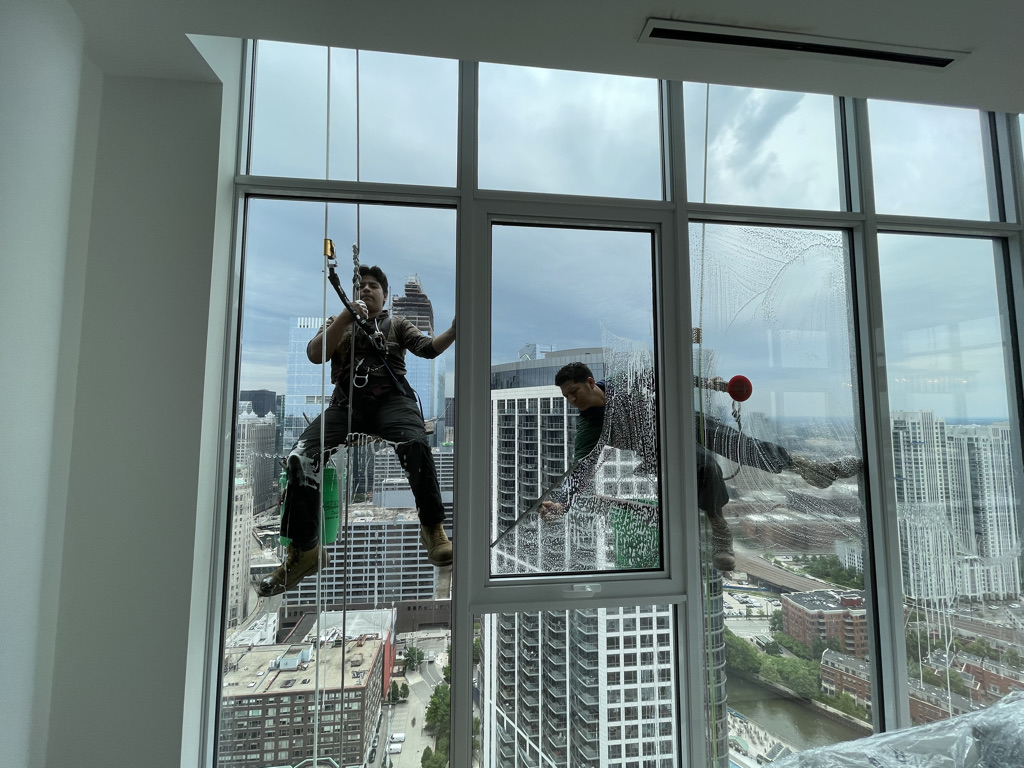What is the Weather in Chicago Like?
Contents
Chicago is known for its harsh weather conditions, with severe rain, winds, snow, and ice affecting the city throughout the year. High-rise buildings are particularly susceptible to the effects of weather, and it’s important for building owners and managers to understand how this weather can affect their windows. In this article, we’ll look over and discuss some of the effects of Chicago weather on skyscraper windows, and outline what building owners and managers can do to mitigate these effects.
Wind Damage
Chicago is known for its strong winds, which can cause significant damage to high-rise building’s windows. Strong winds can cause windows to vibrate and rattle, which can lead to cracks, chips, and can even break in the glass. Wind can also cause water to enter the building through small gaps or cracks in the windows, leading to water damage and mold growth.
To mitigate the effects of wind damage, building owners and managers can consider installing impact-resistant windows. These windows are designed to withstand the force of wind and other types of impact, reducing the risk of damage and ensuring that the building remains secure and protected. Additionally, building owners can consider installing weather stripping and other forms of protection around windows to help reduce the impact of wind and water.
Water Damage
In Chicago, it’s common that high-rise building windows frequently experience water damage. Water damage and mold growth may result from heavy rain and snow seeping into a structure through gaps and cracks in the windows. In high-rise structures, where water can flow down from upper floors and damage lower levels, this water damage can be especially problematic.
Building owners and managers could consider adding water-resistant windows to lessen the consequences of water damage. These windows can help lower the danger of damage because they are made to stop water from penetrating the building. In addition, building owners may think about adding gutters and other types of window protection to assist direct water away from the structure and stop it from
Ice and Snow Damage
Ice and snow can also cause damage to high-rise building’s windows in Chicago. Heavy snowfall can weigh down windows, causing them to bend or break. Ice can also build up around windows, leading to cracks and can also get breaks in the glass. Additionally, the freeze-thaw cycles that are common in Chicago can cause windows to expand and contract, which can lead to warping, cracking, or breaking.
To mitigate the effects of ice and snow damage, building owners and managers can consider installing insulated windows. These windows are designed to reduce heat loss and prevent ice and snow from building up around the windows. Additionally, building owners can consider installing heating elements around windows to help melt snow and ice, reducing the risk of damage.
UV Damage
In Chicago, the sun can also cause significant damage to the windows of high-rise buildings. Windows exposed to UV rays from the sun may eventually fade, turn yellow, or crack. This UV damage can lead to cracks, breaks, or other types of damage in the windows.
To mitigate the effects of UV damage, building owners and managers can consider installing low-E windows. These windows are made to let in less UV light, which helps keep the windows from fading and turning yellow over time. Building owners can also think about adding window shade or other types of window tinting to assist lessen the impact of UV rays.
In conclusion, high-rise building windows may be significantly impacted by the weather in Chicago. Building owners and management should consider the possibility for damage from wind, water, ice, snow, and UV. If you are in a need of some extra support or cleaning windows in Chicago, Green Clean Window Wash will get the job done right, for an even better price.


